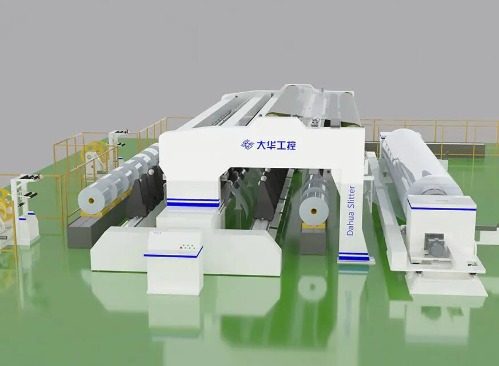
When choosing a primary slitter, there are several factors to consider:
Material type: Determine the type of material that needs to be slit. Different materials have different properties, such as thickness, hardness, and tensile strength. Choose a primary slitter that is designed to handle the specific material type.Material width: Determine the width of the material that needs to be slit. Choose a primary slitter that has a cutting width that is equal to or greater than the width of the material.Slitting speed: Determine the desired slitting speed. Choose a primary slitter that can achieve the required slitting speed while maintaining accuracy and precision.Number of blades: Determine the number of blades required for the slitting operation. Choose a primary slitter that has the appropriate number of blades for the material type and thickness.Blade diameter: Determine the diameter of the blades required for the slitting operation. Choose a primary slitter that has the appropriate blade diameter for the material type and thickness.Blade material: Choose a primary slitter that has blades made from high-quality materials, such as high-speed steel or carbide. These materials are durable and can withstand the wear and tear of the slitting operation.Safety features: Choose a primary slitter that has safety features, such as guards and emergency stop buttons. These features help to protect operators from injury and prevent damage to the machine.Ease of maintenance: Choose a primary slitter that is easy to maintain and clean. Look for machines with features such as easily replaceable blades and simple adjustment mechanisms.
By taking these factors into consideration, you can choose a primary slitter that meets the specific requirements of your application and provides reliable and efficient performance.Besides,The primary slitter is a machine used in various manufacturing industries to cut large rolls of material, such as paper, film, foil, or fabric, into smaller, more manageable widths. The primary slitter plays a critical role in the manufacturing process by producing the required widths for downstream processes and finished products.
The primary slitter is usually the first machine in a converting line and is responsible for cutting the material to the desired width. The machine consists of a set of circular blades that rotate around a central axis to create the slits. The number and configuration of the blades are determined by the desired width and thickness of the finished product.The primary slitter is essential in ensuring the accuracy and precision of the slitting operation. It can produce slits with high-quality edge finishes that are free from burrs, nicks, or other defects. This ensures that the material is suitable for downstream processes and that the finished product meets the required specifications.In addition to its cutting function, the primary slitter also serves as a tension control device. It maintains proper tension on the material during the slitting process to prevent material wrinkles, creases, or other defects that could affect the quality of the finished product.
Overall, the primary slitter plays a crucial role in the manufacturing process by producing the desired widths of material with high accuracy and precision. It helps ensure that downstream processes run smoothly, and the finished product meets the required specifications.